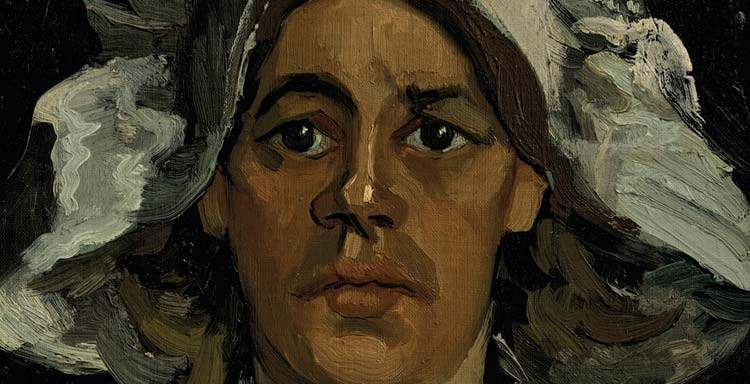Going up for auction on Feb. 28 at Christie’s in London is a painting by Vincet van Gogh (Zundert, 1853 - Auvers-sur-Oise, 1890) known to scholars but never exhibited, and which remained for exactly 120 years in the same private collection: it is a Woman’s Head, a portrait of the peasant woman Gordina de Groot, of which there are numerous versions (one is also on display until March at the Van Gogh exhibition at the Bonaparte Palace). Sien de Groot, known as Gordina, was the woman most portrayed by Van Gogh in his Nuenen period (the work is from March-April 1885): she was about to turn 30 and we also see her in the most famous masterpiece of this phase, The Potato Eaters. The estimate for this work is £1-2 million.
After spending three months in Drenthe, the Netherlands, Vincent van Gogh traveled to Nuenen, the small village where his parents had recently moved, in 1883: he planned to stay there only for a short time, but soon found himself drawn to the faces and conditions of the Brabant peasants. What was initially meant to be a quick visit turned instead into a two-year stay. Writing to his brother Theo, he said, “I see an inexhaustible resource for the subjects of peasant life and the question is just to seize it-work,” and he spent much of the winter of 1884-1885 painting the men and women of the village. In subsequent letters, van Gogh announced plans to paint a large cycle of peasant heads. “I am studying,” he wrote, “for that very reason I can well conceive the possibility that there will come a time when I too will be able to compose easily. And, after all, it is difficult to say where studying ends and painting begins.” Indeed, the period between 1883, when he arrived in Nuenen, until his departure in 1885 for Antwerp would prove to be among the most prolific years of his life.

Van Gogh painted almost a quarter of his known work in Nuenen, but in the letters he identified only one of his models, namely Gordina herself. In the painting for sale at Christie’s, the girl wears, according to local custom, a white cap, which helps create a kind of dramatic, luminous halo over her dark brown hair. Compared to the thick brushstrokes that make up the face and cape, the cap has been articulated with precision. Its pleated edge is composed of short, parallel marks; the protruding cloth skillfully rendered; and Van Gogh accentuated the singular crown with thick impasto. Indeed, in this painting we can see the beginnings of the brushwork that would later develop in France. Woman’s Head is a piercing portrait that evokes in its limited palette, a deep sense of pathos that conveys some of the artist’s inner anguish.
In creating his heads, van Gogh endeavored to empathize with peasants, saying he was “convinced that a painter of peasant life can do no better than to follow the example of Barbizon - to dwell and live right in the midst of that which is painted.” The artist preferred models with “rough, flat faces with low foreheads and full lips, not that sharp look, but full and similar to the works of Millet.” Indeed, in many ways, van Gogh considered the French realist painter a mentor of sorts and, by 1880, had amassed nearly fifty prints and reproductions of the artist’s work. Van Gogh’s mature aesthetic would become a synthesis of Millet’s Barbizon idiom with that of the Hague school.
With its close cut and steady gaze, Woman’s Head is a deeply personal portrait of Gordina de Groot. The intimate nature of the painting also invested Van Gogh’s private life: indeed, rumors spread in Nuenen that the painter was the father of Gordina’s child. Van Gogh strongly denied these rumors, but his portraits of Gordina, including the one for sale at Christie’s, nonetheless suggest a particular intimacy between the artist and the model, evident in the power of his gaze.
We are familiar with the painting’s collecting history: from November 1885 to February 1886 it was in the possession of Anna Cornelia van Gogh-Carbentus, Van Gogh’s mother. In 1886 it then passed to Janus Schrauwen and until 1903 it wandered through a number of Dutch private collections until it reached the ancestor of the present owners.
 |
| London, a Van Gogh painting from the Nuenen period for sale at Christie's |
Warning: the translation into English of the original Italian article was created using automatic tools. We undertake to review all articles, but we do not guarantee the total absence of inaccuracies in the translation due to the program. You can find the original by clicking on the ITA button. If you find any mistake,please contact us.